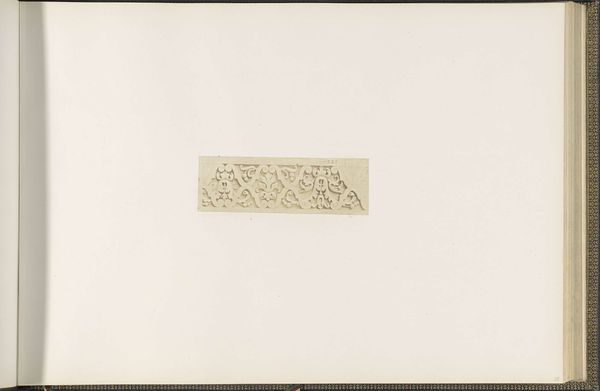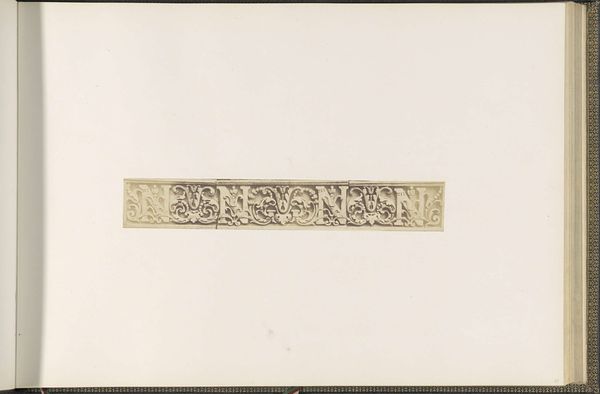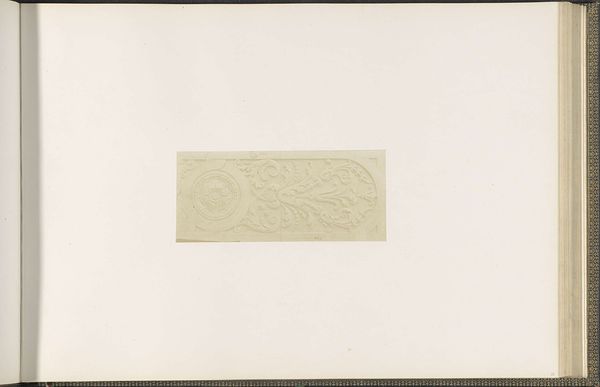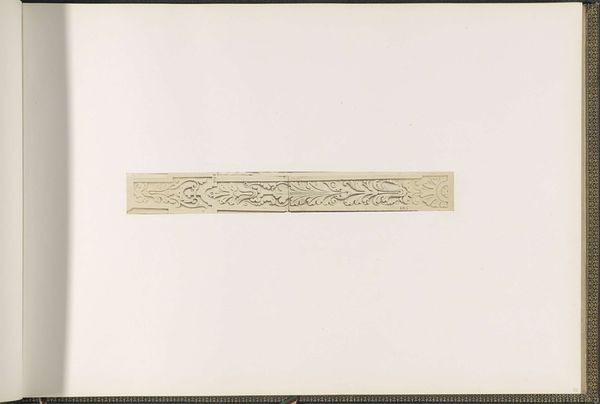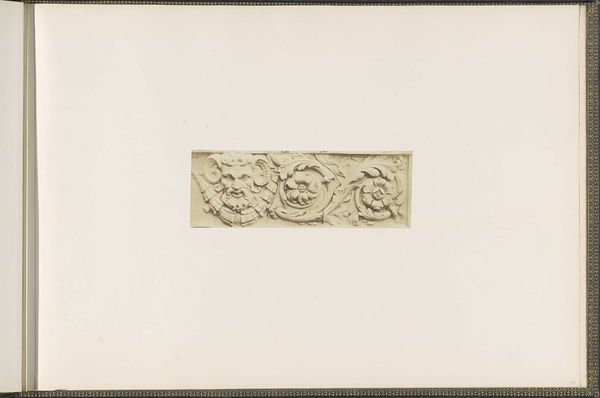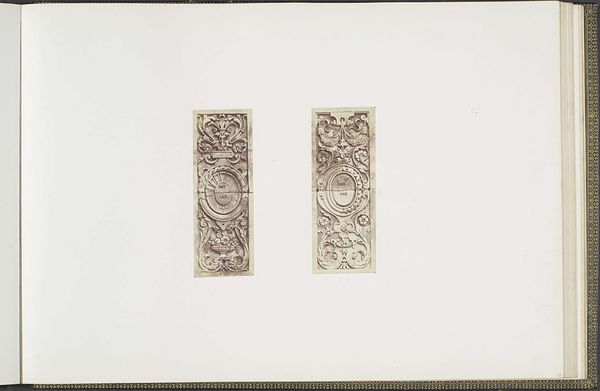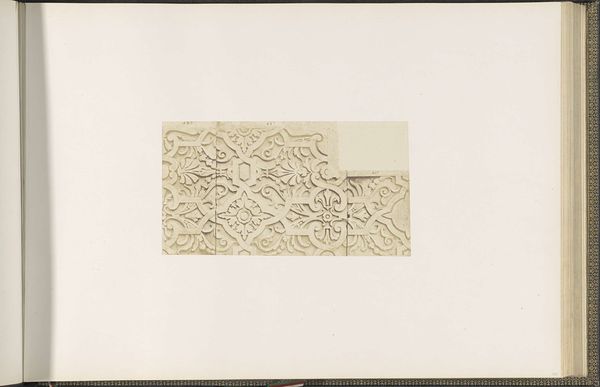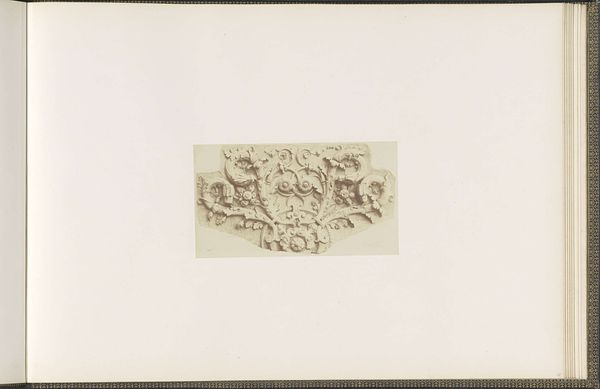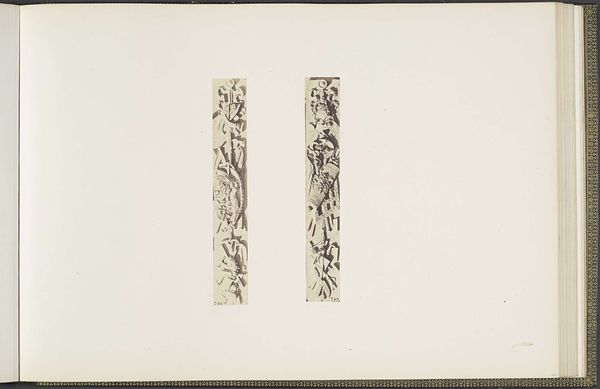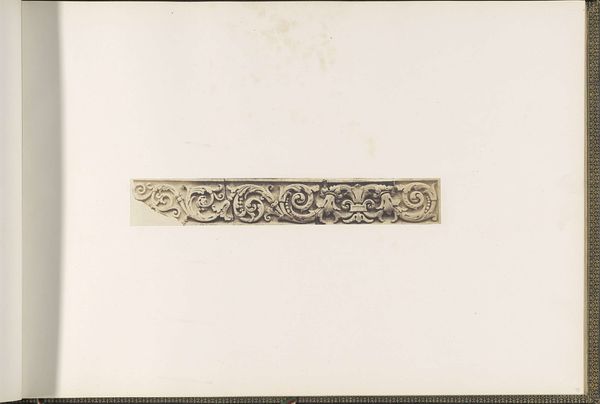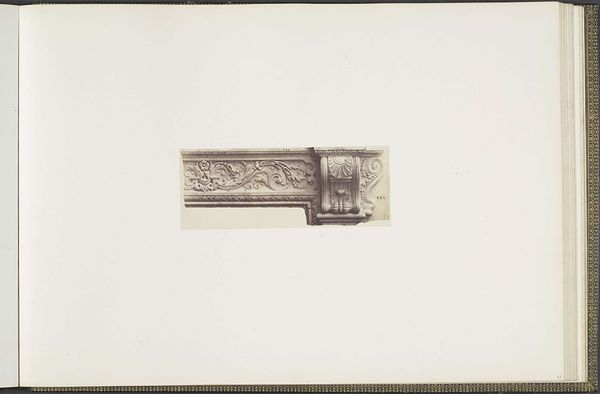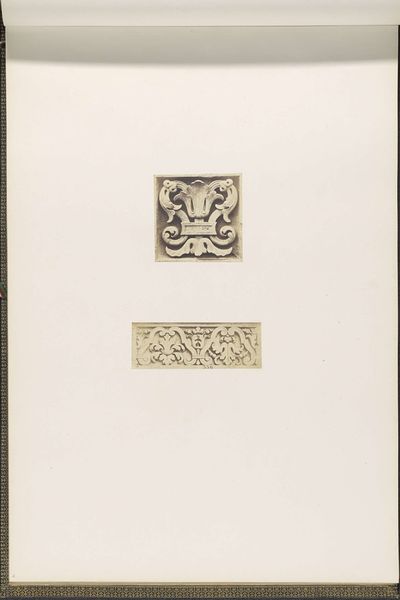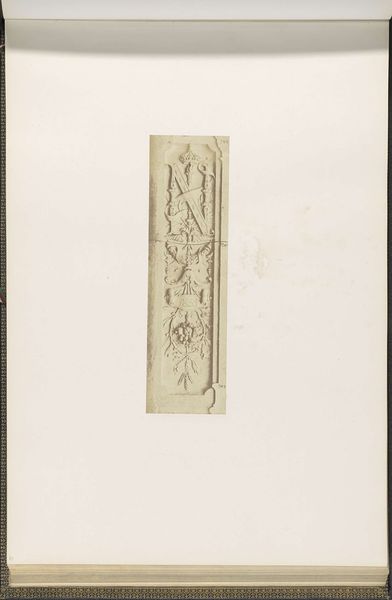
Gipsmodel voor een friesversiering op het Palais du Louvre c. 1855 - 1857
0:00
0:00
edouardbaldus
Rijksmuseum
ornament, print, photography
#
ornament
# print
#
photography
#
geometric
Dimensions: height 376 mm, width 523 mm
Copyright: Rijks Museum: Open Domain
Editor: So, this is Edouard Baldus' "Gipsmodel voor een friesversiering op het Palais du Louvre," created around 1855-1857. It's a photograph of what looks like a plaster model, destined as a frieze decoration with an elaborate "N" at the centre. I'm immediately struck by the almost obsessive detail and the contrast between the ornate plasterwork and the flat photographic surface. What catches your eye? Curator: The transformation of plaster—a readily available, relatively inexpensive material—into an object intended to adorn a symbol of state power, the Louvre, speaks volumes about the social and economic forces at play. Photography here isn't just documenting the design; it’s participating in its lifecycle, mass producing images for circulation, for consideration. Editor: Participating how? Curator: Think about it: The photograph democratizes the access to the design. Rather than relying on sketches or seeing the finished article carved in stone, multiple stakeholders might have consulted photographs like these to critique or refine it. But beyond that, consider the labor involved. The hands that modeled this, and those involved in Baldus' photographic studio. These are the invisible workers enabling the "high" art, but also are bound to this new reproducibility. What does it mean for artisanal practices, caught as it were by mechanical reproduction? Editor: I see what you mean, how the photograph, as a multiple, kind of underscores the transition from unique artwork to something more reproducible and integrated into a larger industrial system of producing architectural elements. And it kind of flattens that history of labour and plaster too. Curator: Precisely! It reveals the complex relationship between art, labour, and technological advancement, particularly in the context of 19th-century Paris. Perhaps one begins to see not just ornament, but social inscription too. Editor: It makes you consider all these questions of production, labor, and distribution, right? Thanks, I will not see the surface the same way!
Comments
No comments
Be the first to comment and join the conversation on the ultimate creative platform.
